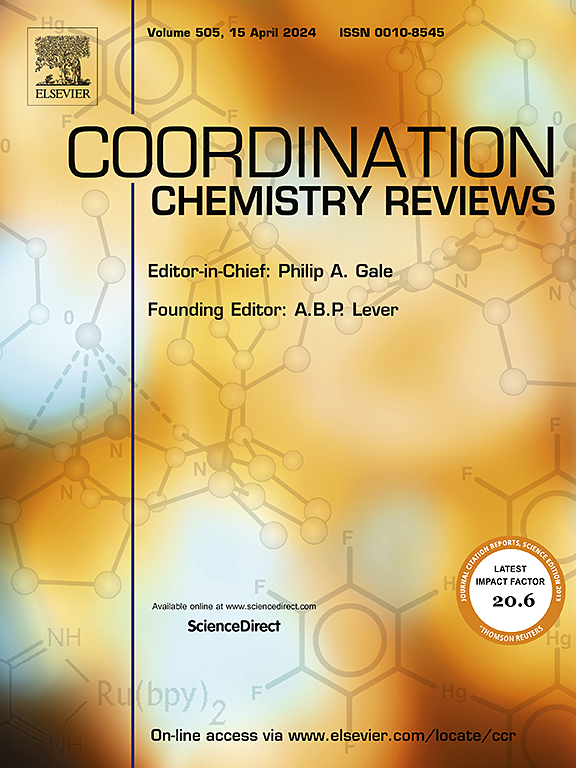介孔氧还原反应电催化剂:从机理、表征到设计
IF 23.5
1区 化学
Q1 CHEMISTRY, INORGANIC & NUCLEAR
引用次数: 0
摘要
氧还原反应(Oxygen reduction reaction, ORR)是金属-空气电池等可持续能源技术的核心过程,对能量转换效率起着决定性的作用,但其固有动力学往往较慢。因此,需要高活性和稳定的ORR电催化剂来加速反应过程,而介孔设计具有高比表面积,丰富的活性位点和快速的传质性,是一种有前途的解决方案。本文首先从热力学和动力学两方面对ORR反应机理进行了理论探讨,并对介孔电催化剂设计的优势进行了分析。随后,展示并比较了一系列具有不同结构和动力学特征的介孔ORR电催化剂的最新研究进展,阐明了它们与活性的关系,包括贵金属、过渡金属、碳基、复合材料等类别,以及与能源相关的应用。同时,光谱学的见解有助于对中间体和反应路线有更多的了解。最后,从结构设计、表征技术、理论模拟和数据标准化等方面系统地提出了设计原则和展望,以期对介孔ORR电催化剂的发展和应对未来挑战提供启示。本文章由计算机程序翻译,如有差异,请以英文原文为准。


Mesoporous electrocatalysts for oxygen reduction reaction: From mechanisms, characterizations to designs
Oxygen reduction reaction (ORR) as the core process of sustainable energy technologies such as metal–air batteries, plays a decisive role in energy conversion efficiency but usually suffers from sluggish intrinsic kinetics. Thereby highly active and stable ORR electrocatalysts are desired for accelerating the reaction process, while mesoporous design is one promising solution benefitted from high specific surface area, abundant active sites, and rapid mass transfer. In this review, the proposed mechanisms of ORR process are firstly theoretically discussed from both thermodynamic and kinetic perspectives, accompanied by the advantage analysis of mesoporous electrocatalyst design. Subsequently, recent research progresses of a series of mesoporous ORR electrocatalysts with distinct structural and kinetic characteristics are demonstrated and compared to clarify their correlation with activity, including noble metal-, transition metal-, carbon-based, and composite material classes, etc., together with energy-related applications. Meanwhile, spectroscopic insights contribute to more understanding on intermediates and reaction routes. Finally, design rules and prospects are systematically provided in terms of structural design, characterization techniques, theoretical simulations, and data standardization perspectives, for inspiring the development of mesoporous ORR electrocatalysts and meeting future challenges.
求助全文
通过发布文献求助,成功后即可免费获取论文全文。
去求助
来源期刊

Coordination Chemistry Reviews
化学-无机化学与核化学
CiteScore
34.30
自引率
5.30%
发文量
457
审稿时长
54 days
期刊介绍:
Coordination Chemistry Reviews offers rapid publication of review articles on current and significant topics in coordination chemistry, encompassing organometallic, supramolecular, theoretical, and bioinorganic chemistry. It also covers catalysis, materials chemistry, and metal-organic frameworks from a coordination chemistry perspective. Reviews summarize recent developments or discuss specific techniques, welcoming contributions from both established and emerging researchers.
The journal releases special issues on timely subjects, including those featuring contributions from specific regions or conferences. Occasional full-length book articles are also featured. Additionally, special volumes cover annual reviews of main group chemistry, transition metal group chemistry, and organometallic chemistry. These comprehensive reviews are vital resources for those engaged in coordination chemistry, further establishing Coordination Chemistry Reviews as a hub for insightful surveys in inorganic and physical inorganic chemistry.
 求助内容:
求助内容: 应助结果提醒方式:
应助结果提醒方式:


